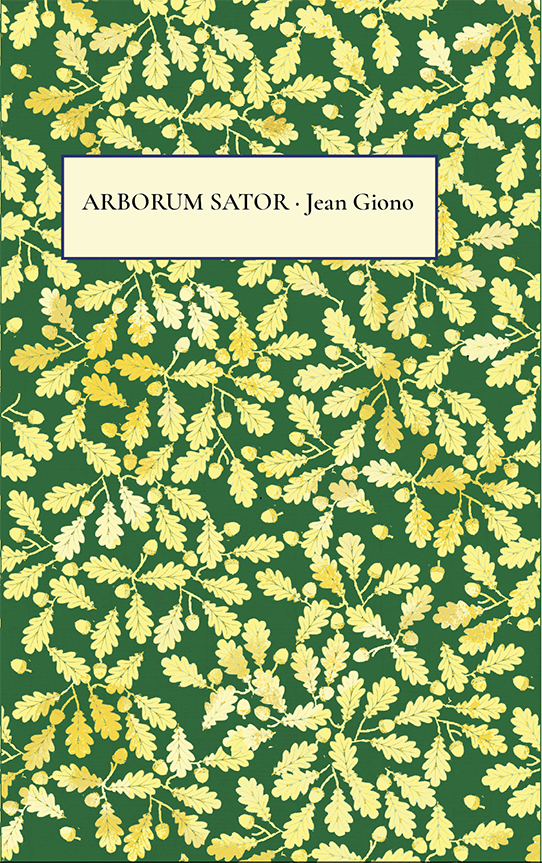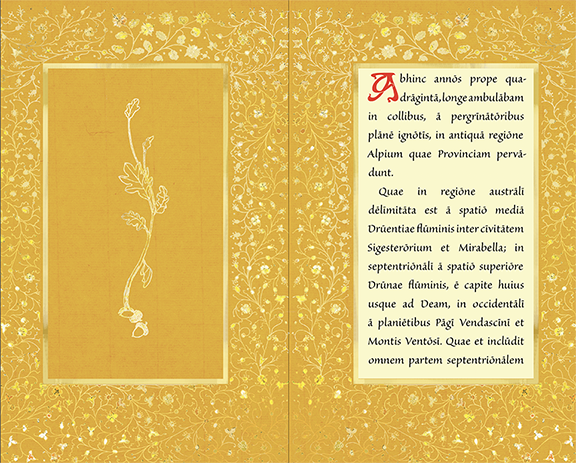Arborum Sator: ecology, 1953

To purchase a copy of Arborum Sator, click here.
l'homme qui plantait des arbres :: the man who planted trees ::
in Latin
Amīca quaedam in Furnō-Calcariō, i.e., Forcalquier, mihi librum Iōannis Giono nūper dedit. Cum opera Iōnae mihi placant, prorsus cōnsēdī ad hunc librum brevem legendum. Librō perlectō, cōnstituī eum in linguam Latīnam convertere et pāginās in modō antīquō adōrnāre.
Iōnae modus scrībendī rēctus est atque simplex. Sensus nōn est obscūrus. Ille tē petat agere, sī quidem sōlus sīs. Quid refert, sī sēmen ūnum plantās? Saltem quicquid fēcistī. Quid refert, sī librum Iōnae in linguam mortuam convertam? Nesciō quis cāsū et forte eum legere posset et pulchritūdinem ūtilitātemque arborum intellegeret.
A friend in Forcalquier, a commune in Provence, which incidentally is named for the lime kilns built there in Roman times, recently gave me Jean Giono’s book. As I like Giono’s work, I straight away sat down to read this short book. When I finished, I decided to translate it into Latin and to decorate the pages in the medieval style of manuscripts.
Giono’s writing is straightforward and simple. His meaning is clear. He asks you to take action, even if you are by yourself. What does it matter if you plant one seed? At least you have done something. What does it matter, if I translate Giono’s book into a dead language? I won’t know who by the slimmest of chances might read it and thereby understand the beauty and benefit of trees.
Many think that Giono’s main character, Elzéard Bouffier, was a real person, but he is not. He is a fictional hero who brings the land devastated by years of abuse back to life by planting trees. Whether wittingly or unwittingly, Giono chose the name Elzéard, which in Hebrew is closely allied in meaning with Lazarus. Thus, this is a story about resurrection, an allegory that has given birth to many, many reforestation projects around the world, and it is a reminder about what each of us can do to care for our planet.

